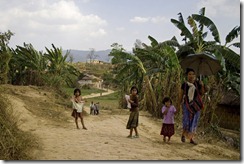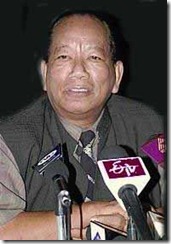 Mizoram football seems to have arrived on the national scene finally. The win against Kerala in the Santosh Trophy pre-quarterfinal match on Wednesday, which took them to the elite quarter-final stage for the first time, has set the tournament alight.
Mizoram football seems to have arrived on the national scene finally. The win against Kerala in the Santosh Trophy pre-quarterfinal match on Wednesday, which took them to the elite quarter-final stage for the first time, has set the tournament alight. Suddenly, Beingaichho Beokhokhei & Co, with their electrifying pace and short-passing game, are among the favourites to win the title.
Team manager Vanlal Ngheta is confident about going the distance. “The win against Kerala is a huge boost and now we are aiming big. The boys are young, very fit and agile. We are missing our top two stars S hylo Malswamtlunga and Lalram Luaha owing to injury.
But in Beokhokhei, skipper Zaidin Moya and Robert Lalthampuana we have quality. We are definitely a title contender,” Ngheta told The Indian Express.
This despite the lack of infrastructure in the state. “We don’t have a single proper football ground in the state. Boys practise on hard grounds. The local football set-up is also not something to speak of. Only six teams play in the first division league and there is not a single academy to groom the youngsters,” Ngheta said.
“The state government is interested in football. They support the game financially as private sponsorship doesn’t exist. The government is also planning to build a good stadium,” he said.
Notwithstanding the odds, there has been a steady flow of talents from Mizoram. Malswamtlunga, Luaha, Robert, Beokhokhei, PC Lalawmpuia — all have been representing the top clubs in the country. But unlike their next-door neighbour Manipur, they have so far failed to taste success as a team.
“Young talents are usually picked up by the spotters of the Tata Football Academy and SAIL Academy and are nurtured there. From there they burst into the big league. Sometimes there is help from the North-East Council as well,” Ngheta said.
Without a proper training facility back home, the Mizoram team arrived in Kolkata 15 days before the Santosh Trophy. They did some conditioning in Aizawl, and here they have been using the SAI facility.














